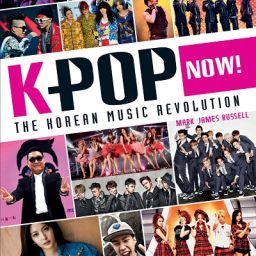by Raizel Liebler

Fuhr is definitely a completist when it comes to giving readers an understanding of how k-pop became popular – ranging from marketing, to the music itself, to specific kp-op fandom traditions. I especially appreciated the discussions of the influence of non-Korean elements in k-pop (such as the same Scandanavian pop writers that write in English) and the specific Korean tradition of “fracturing the album concept” – allowing for mini-albums, EPs and album re-packages, with additional singles.
Fuhr also gets into the details of the process for trainees on the road to idoldom, such as the competitions/auditions in multiple categories: singing, dancing, look, acting, songwriting, humor, and modelling. And how trainees are trained (as least by SM) in the dance styles of jazz, hip-hop, sexy hip-hop, and popping. (78-81)
This book also doesn’t hold back when discussing the underlying difficulties of supporting a squeaky clean music market on the backs of those who enter the marketplace when still children:
“The question of whether the K-Pop industry benefits from unfair contracts, teenage exploitation, and violation of basic human rights has emerged as a serious subject in public debates shedding light on the disastrous financial situation of artists and on suspect working conditions in the pop idol industry. Exclusive long-term contracts over more than ten years, tight schedules for performances and events, unpaid wages and inappropriate compensation, control over private life, child labor, and sexualization of teenage idols were among the most debated problems that asked for adequate political and legal regulation.” (77)
The most valuable aspect of this book – from the perspective of someone who reads every academic book on Korean pop in English – is the detailed discussion of musical song structure for K-pop songs, considering this is the first book to do so.
Fuhr’s musicology discussion explains in detail what makes the sound of k-pop specifically sound like kpop. He discusses the importance of the hook song form and hooks specifically, the flow-oriented song structure, the climax-oriented song structure, the breaking-the-flow song structure, and the importance of both the rap bridge and ballads to K-Pop. One of the most unique elements of the book are musical breakdowns and discussions of popular K-pop songs including TVXQ’s Rising Sun, Brown Eyed Girls’ Abracadabra, and Super Junior’s Sorry Sorry.
He elucidates that the “timely coincidence between the burgeoning of hook songs in K-pop and K-pop’s international acceptance beyond Asian countries may further suggest the specific (i.e., extremely repetitive and disrupted) formal structure of hook songs contributes to K-Pop’s attractiveness to young listeners across continents.” (90)
I also want to note that in addition to all of this above, Fuhr also manages to discuss government support for kpop, the nationalism that swirls around k-pop, anti-fans, and the controversial pushes to market BoA and Wonder Girls to English-speaking markets (read: Americans who can only handle music in English).
Any negatives? Not really, unless I want to be super picky – and mention how there isn’t discussion of law, beyond a mention of waiving copyright (which isn’t how it works). But that is like critiquing the marzipan leaves on an excellent cake – this book is such a good academic overview of k-pop! I look forward to reading more from Fuhr.
Summary: Highly recommended for researchers or libraries with a strong interest in musicology, cultural studies, cultural anthropology, popular culture, Korea studies, or Asian studies. The specific focus on the music structure of K-pop in this book truly makes it unique from its peers – and its practical description of K-pop music, videos, and business aspects makes it eminently quotable. Other books are better for a focus specifically on fandom elements of k-pop, but the breath of the topics here makes up for it, unless fandom is the only area of interest.
However, this book is quite pricy in hardcover, so that format suggested for purchase only for serious individual researchers (try e-book). Suggested purchase in any format definitely for libraries with collections in musicology, cultural studies, cultural anthropology, popular culture, Korean studies, or Asian studies.





Oh, how lovely to see a book that is tackling the entirety of kpop rather than going at it from the ‘just copying Western music’ tip.